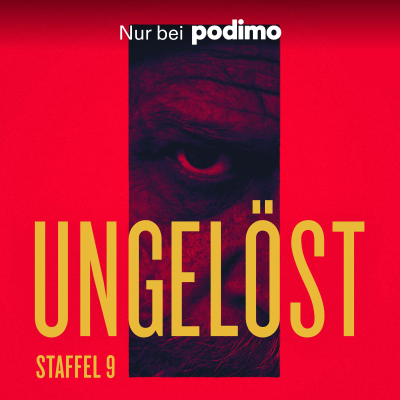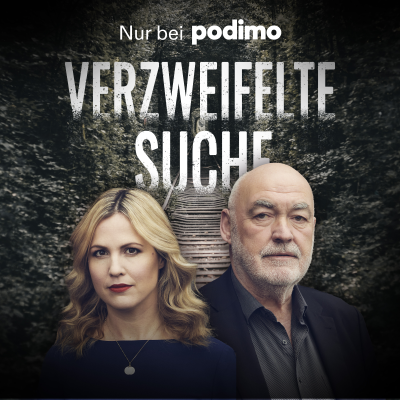
Regeneration Nation Costa Rica
Englisch
Gratis en Podimo
Mehr als 1 Million Hörer*innen
Du wirst Podimo lieben und damit bist du nicht allein
Mit 4,7 Sternen im App Store bewertet

Mehr Regeneration Nation Costa Rica
Regeneration Nation Costa Rica explores who's doing what to bring CR toward environmental & social wellbeing.Join us as we share stories, strategies, and insights from ecologically & socially beneficial projects contributing to the change we need to see more of in the world.These stories provide businesses and landowners everywhere access to unique ideas for how they can design their own business models for regenerative success and impact.In the end, we hope to see more people succeed in their dreams to live & work in ways that are beneficial to the environment, living beings, and future generations.Support the Podcast at: https://ko-fi.com/regenerationnationcr/
Alle Folgen
30 Folgen029 Santi Moringa: Living Social Permaculture (Molinos Verdes de Moringa)
In this episode, I had a chat with a long-time friend, Santiago Moringa, from Molinos Verdes de Moringa. Santi is a leader in social permaculture and has over a decade of experience building community gardens and other socially regenerative projects across Costa Rica and internationally. In our conversation, Santi shares his journey from discovering permaculture through the lens of agriculture to embracing the broader social aspects that foster community and connection. We delve into his passion for integrating diverse communities into the permaculture movement, including elders and marginalized groups. Santi also opens up about his personal transformation and the pivotal moments that shaped his commitment to the social permaculture movement. From his early experiences with factory farm methods to his life-changing reflections on the importance of love and empathy in all human interactions, Santi's stories are heartfelt calls to action for us all. I’m grateful for Santi’s emphasis on integrating social elements into permaculture, focusing not just on physical structures but on fostering genuine human connections and community resilience. We really need to expand our perspectives on permaculture and how it can be applied beyond food forests and water management. Santi also highlighted the need to embrace diversity beyond appearances. Instead, seek functional diversity in viewpoints and interactions that honor each individual's unique contributions, leading to more innovative and inclusive solutions. With this comes a need to understand and embrace our emotions, which leads to personal growth and stronger community bonds. It's crucial to channel these emotions constructively to create a safe container for that diversity to be expressed. At the same time, always remember that growth is a process, and it’s crucial to be patient with ourselves and others as we navigate the human experience together. If Santi's work inspires you, consider putting effort toward making a difference in your local community. Support those already doing incredible work so you can build a more regenerative future together. Thank you for joining us today. If you enjoyed this episode, please subscribe, rate, and leave a review. Your support helps us reach more listeners and spread the message of regenerative living. To follow more of Saniti’s contributions toward a regenerative world, check out: Website - www.mvmoringa.com [http://www.mvmoringa.com]YT - https://www.youtube.com/@mvmoringa/ [https://www.youtube.com/@mvmoringa/] IG - https://www.instagram.com/mvmoringa/ [https://www.instagram.com/mvmoringa/] This episode is brought to you by, well, YOU! I haven’t built up my audience enough to have attracted sponsors, so instead of buying an organic cotton shirt or an online course, maybe you can just buy me a coffee! Go to https://ko-fi.com/regenerationnationcr [https://ko-fi.com/regenerationnationcr] to drop a few dollars in the bucket and let me know you care. You can now also visit our website’s Resources page to find lots of great information and products that many have found to make their lives better. Visit: https://regenerationnationcr.com/resources [https://regenerationnationcr.com/resources] Special thanks to Patrick Fuentes for editing this episode! Music: Rite of Passage by Kevin MacLeod Link: https://incompetech.filmmusic.io/song/4291-rite-of-passage License: http://creativecommons.org/licenses/by/4.0/ Support the show [https://ko-fi.com/regenerationnationcr]
028 Itai Hauben: Why Permaculture Design is The First Step of the Wise (Symbiosis Eco Design)
In this interview, I visited Itai Hauben at his lovely home and permaculture education center called Adama. Adama is nestled in the mountains of the Chirripo River Valley, where Itai and his wife Melina teach permaculture design courses to lucky students every year. It’s also the headquarters of Symbiosis Eco Design, their permaculture design and implementation business, serving land projects nationwide. Symbiosis is a powerful change agent in this country ecologically, socially, and educationally. We got together to chat about why creating a permaculture design is such a highly recommended investment BEFORE making any significant investments into any land-based endeavor. Itai gives several examples illustrating the importance of hiring a professional who can read the landscape and avoid potential pitfalls. In addition, Itai emphasizes the need to conduct proper due diligence before purchasing a property and hiring specialists to ensure the security of your investment. There are some things that just can’t be undone! Understanding and integrating local knowledge into permaculture design can’t be overstated. We've delved into the critical aspects of water management, soil stability, and the creation of food forests, illustrating the importance of thoughtful, well-planned permaculture designs. Learning from our mistakes is ordinary, meaningful, and part of the journey. Learning from other people’s mistakes through research or hiring the assistance of someone further along the path is wisdom, and an integral part of the permaculture design process. The episode wraps up with talks on preventing burnout and pacing a project according to the client's needs. Let's carry forward the wisdom and inspiration from Itai's journey. Remember, the path to successful, sustainable living and professional growth in permaculture is paved with patience, planning, and a profound respect for the surprises that can be found amidst the natural world. May we all embrace these principles in our own endeavors, nurturing a future where both our environment and our businesses can flourish in harmony. To follow more of Itai’s contributions toward a regenerative world, check out: Website - https://symbiosiscr.com/ [https://symbiosiscr.com/] FB - https://www.facebook.com/SymbiosisEcoDesign [https://www.facebook.com/SymbiosisEcoDesign] IG - https://www.instagram.com/adama_permaculture/ [https://www.instagram.com/adama_permaculture/] Email - symbiosisecodesign@gmail.com [symbiosisecodesign@gmail.com] Other recommendations: * Regeneration of desert into forests in Jordan https://www.greeningthedesertproject.org/ [https://www.greeningthedesertproject.org/] To support the show, go to https://ko-fi.com/regenerationnationcr [https://ko-fi.com/regenerationnationcr]. You can now also visit our website’s Resources page to find lots of great information and products that many have found to make their lives better. Visit: https://regenerationnationcr.com/resources [https://regenerationnationcr.com/resources] Support the show [https://ko-fi.com/regenerationnationcr]
027 Marcus Merlin Hinds: The Power of Forgiveness and Finding Your Why (MoZen Temple)
Welcome to an enlightening conversation with Marcus Merlin, steward of MoZen Temple in the Diamante Valley. We delve deep into personal growth, environmental sustainability, and the much-needed impact of regenerative entrepreneurship. Merlin shares his insights into the power of forgiveness as a personal practice and a foundation for creating meaningful connections and building communities. Forgiveness has the power to transform not just individual lives but entire communities. The transformative power of forgiveness can unlock our spiritual beliefs and lead us to rewrite our personal narratives in ways that propel us forward. Marcus’s story reminds us of the profound impact forgiveness can have on our lives, offering us freedom and a new perspective on our purpose. Together, we explore the concept of 'Finding Your Why,' as Merlin discusses the significance of discovering one's purpose to facilitate freedom from the past and a clear direction forward. This idea serves as a gateway to passion-driven work, where doing what you love transforms the traditional notion of work and productivity. It is also the theme of his annual retreat in Costa Rica. The significance of finding our 'why,' creating passion-driven work, and the magic of vulnerability within dream teams are all worth reflecting deeper on. These elements are crucial for anyone looking to lead a fulfilling life while making a positive impact on the world. They provide us with tools and philosophies to embrace a more holistic and purpose-driven approach to life. The conversation also highlights the essence of building 'dream teams'—individuals who share a passion for what they do and support one another in achieving common goals. We discuss the importance of vulnerability and authenticity within these teams, revealing how these qualities can be superpowers in personal and professional development. We also touch on the role of shamanic and spiritual practices in personal transformation, the importance of selective commitment to stay true to one's values, and the power of community and forgiveness in action. The role of shamanic and spiritual practices in personal transformation might be a new concept for some, but it’s thankfully becoming more commonplace in our modern-day culture. The lessons from this episode have the potential to catalyze change in every aspect of our lives. If you’d like to dive deeper into these concepts, visit www.findyourwhy.info [http://www.findyourwhy.info] and register for Merlin’s upcoming retreat. If you haven’t yet, be sure to subscribe to our newsletter at https://regenerationnationcr.com [https://regenerationnationcr.com] to hear more about cultural bridge-building, regenerative-minded events, and future podcast releases. To follow more of Merlin’s contributions toward a regenerative world, check out: Website - www.findyourwhy.info [http://www.findyourwhy.info] FB - https://www.facebook.com/marcushinds1 [https://www.facebook.com/marcushinds1] IG - https://www.instagram.com/marcusmerlinpowerguide/ [https://www.instagram.com/marcusmerlinpowerguide/] Go to https://ko-fi.com/regenerationnationcr [https://ko-fi.com/regenerationnationcr] to drop a few dollars in the bucket and let me know you care. You can now also visit our website’s Resources page to find lots of great information and products that many have found to improve their lives. Visit: https://regenerationnationcr.com/resources [https://regenerationnationcr.com/resources] Support the show [https://ko-fi.com/regenerationnationcr]
026 Katya Deluisa: Cultivating a Dementia-Friendly Society (The Infinite Mind)
In this episode, we dive into the fascinating world of dementia care with our guest, Katya Deluisa, of The Infinite Mind. Katya shares her journey and how she became involved in working with individuals with dementia after observing the loneliness and lack of connection experienced by individuals with dementia, even when surrounded by family. Katya’s grown a passion for educating families on how to better understand and communicate with their loved ones. The conversation delves into the nature of dementia and the physiological changes that occur in the brain. Katya explains that dementia is a symptom rather than a specific disease, encompassing a range of conditions that affect cognitive function. She discusses how dementia impacts memory, imagination, and the ability to plan for the future. She also highlights the importance of understanding altered perception in individuals with dementia and the challenges they face in perceiving and navigating the world around them. The role of caregivers in providing support and care for those with dementia is a significant focus of the conversation. Katya emphasizes the need for caregivers to focus on their own self-care. It’s vital to maintain balance while caring for a loved one with this debilitating condition. She shares personal stories of caregivers she’s worked with, highlighting the transformation that can occur when they shift their perception and approach. Throughout the conversation, we discuss regenerative approaches to dementia care and how individuals with dementia can still experience moments of joy, love, and connection. Katya brings focus to the unconditional love and purity of spirit that individuals with dementia possess, even as their cognitive abilities decline. She emphasizes the importance of empowering families through knowledge and shifting their perception to recognize the changing capabilities and needs of their loved ones. Katya's approach to dementia education and caregiving goes beyond the conventional methods. Through her collage communication technique and other innovative approaches, Katya has helped individuals with dementia express themselves and regain a sense of identity. Katya's work in educating and supporting families affected by dementia is a valuable resource for those seeking guidance and understanding in caring for their loved ones. If you’re a caregiver, have a family member whose mind is fading, or just want to better understand this condition that grips a growing percentage of our global population each year, this episode is for you. One big takeaway is the importance of perception and understanding when caring for someone with dementia. Katya emphasized the need for caregivers to shift their perception of their loved ones as they navigate the cognitive changes brought on by the condition. By seeing individuals with dementia as beings in the process of releasing their ego and becoming their unique essence, caregivers can foster a deeper connection and provide better support. This shift in perception can lead to a more profound and meaningful relationship between caregivers and their loved ones. Another important insight is the power of communication and connection. While individuals with dementia may lose cognitive abilities over time, their ability to love and be loved remains strong. Katya helps us remember that even in the midst of cognitive decline, people with dementia can still express and receive love, creating moments of profound connection. Support the show [https://ko-fi.com/regenerationnationcr]
025 Ian-Michael Hébert: Ecovillage Design with Reciprocity at Heart (HOLOS)
In this episode, we speak with Ian-Michael Hébert, one of the founders of Holos, a private retreat center and community specializing in holistic living and transformational experiences. In our conversation, he discusses the genesis of Holos, their vision for a sustainable and resilient community, and the importance of focusing on reciprocity and honoring the indigenous people of the land. Ian-Michael also emphasizes the importance of preserving the natural beauty of the Diamante Valley and their commitment to stewardship. Among other details of the community’s infrastructure, he describes their design for conserving a quarter of the property while reforesting most of the already denatured zones. They also have plans for a macaw reintroduction initiative. Ian-Michael reflects on challenges they’ve faced in getting set up with elements such as water management, communication breakdowns with the municipality, and bridging the gap between foreigners and locals. As we discuss the importance of supporting the local community, paying fair wages, and engaging with local service providers, Ian-Michael affirms Holos’s goal to continue reassessing their programming to focus more on community relations and neighborhood development. Other topics we touched on include developing a clear vision, team building, project financing, and embracing the wisdom of not knowing. I appreciate the degree to which Holos works to cultivate reciprocity with surrounding humans and the natural world. As important as it is, it can be challenging to keep such delicate subtleties at the forefront while in the development phase and when juggling the needs of investors and push-back from the municipality, but it’s the path worth walking. Setting space aside to develop housing and other infrastructure for the Costa Rican and indigenous Boruca people, who compile much of their labor force, is a significant investment. I’ve been happy to see this practice implemented among some of the other ecovillage projects I’ve been investigating, as well. It’s a valuable step in honoring the needs of their workforce while holding space for the local culture and providing stability for the project. Another element I’ve found attractive among the ecovillages I’ve been looking into is the effort to lay out a portion of the community infrastructure kept open for the use of the regional community, which is also represented in Holos’s design. Something that echoed strongly for me in this interview is that it can be difficult to handle people’s projections when operating a project of this size. Gossip can be plentiful, and the most altruistically intending projects are often the easiest targets for it by those who are doing less, feeling like a project of that size should be able to do it all. I’m glad that Ian-Miachael plans to hold more events to bring the local community in to see more of what’s happening there. Another detail that stuck out for me was Ian-Michael’s share of finding the right team. This topic often comes up with other landowners and entrepreneurs I work with. When looking for your team, it’s essential to identify your strengths, clearly describe your needs, make a humble ask out to your community, and have patience as it comes together. Before letting you go, I’d like to address a housekeeping detail regarding working with a team. About 2/3rds into the interview, there's a moment where I descr Support the show [https://ko-fi.com/regenerationnationcr]















































